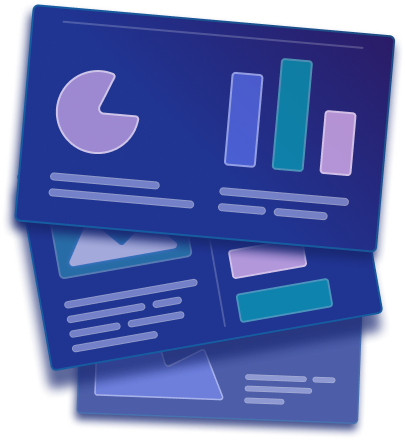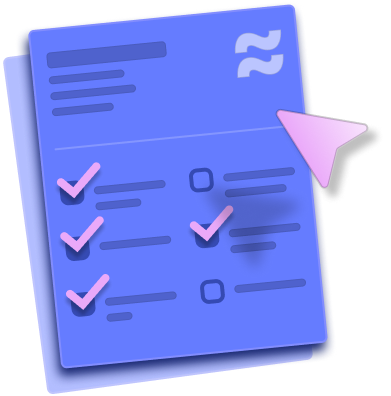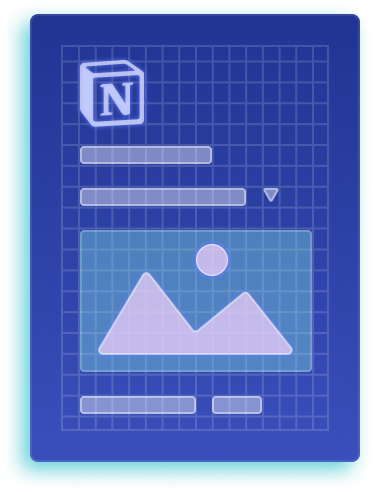
If you had a chance to scroll through some of the amazing websites built with Webflow, you’re likely familiar with its potential.
Webflow sites are built different.
One can create and publish beautiful, sleek, and responsive websites, cutting the time required for the grunt work. Still, all those visual wonders filled with breathtaking transitions and animations are very fast and convenient.
However, many newcomers wonder how that is possible.
What’s the secret ingredient that Webflow has which isn’t present in other website builders that make its websites so powerful?
In this blog, I’m going to answer a simple question: how does Webflow work?
I’ll introduce it to its primary capabilities and compare it to other builders to help you understand its position and how it gives Webflow an advantage.
Moreover, I’ll briefly guide you through the process of building a site with Webflow to display the powerful yet effective tool that is Webflow.
Read on.
{{cta}}
A Brief Introduction to Webflow
Webflow is based on a visual interface that uses various drag-and-drop elements. By adding them onto a canvas and style them with CSS properties, you can make virtually anything.
Professional Webflow users can also add captivating interactions and animations to make sites more dynamic and engaging.
Finally, Webflow automatically generates clean and semantic HTML, CSS, and JavaScript code for you, so you don't have to worry about coding errors or compatibility issues.

Webflow vs. Other Website Builders
I compared Webflow to Wix, Squarespace, and WordPress. Here’s what makes Webflow stand out from the pack.
- Wix — Wix is another all-in-one platform that covers the basics of website building. Anyone can learn essential features and build a website. It has a drag-and-drop interface, a spectrum of templates, and a range of apps and integrations. However, Wix doesn't have highly customizable design templates, and the capabilities are minimal, so creating a website that looks stunning or has advanced functionality is hard. Wix also has some limitations on customization, performance, and SEO. Check out our detailed Webflow vs Wix comparison.
- Squarespace — Squarespace is a platform that mainly focuses on the design and aesthetic aspects of websites. It has beautiful templates, elegant typography, and a sleek editor. However, it also has some drawbacks. The main ones are lack of flexibility, scalability, and integrations.
- WordPress — WordPress is the world's most widely used content management system. It powers 29% of the internet and offers endless possibilities for creating and managing websites. However, WordPress also comes with a steep learning curve and requires technical skills to set up and maintain. WordPress also has some issues with security, speed, and updates. Learn more about Webflow vs WordPress.

Understanding How Webflow Works
Think of Webflow as a toolbox offering various capabilities to make unique, fast, and modern websites. However, if I were to pick the most important tools, it would come down to the following four:
- The Designer — The designer lets you visually create websites. It relies on drag-and-drop elements and features a range of other capabilities — CSS properties, animations, interactions, and more. You can also use the Designer to add content to your website, such as text, images, videos, forms, etc. The Designer is a WYSIWYG (what you see is what you get) editor that shows you exactly how your website will look on different devices and browsers.
- The CMS — Webflow’s content management system lets you create and edit the site’s content. You can create custom content collections, define fields, structure collections, and more. Moreover, CMS can be connected to external data sources, such as Google Sheets, Zapier, and more.
- The Editor — The Editor lets you or your clients edit your website's content without affecting the design. In other words, it allows editing content while the site is live, and you get to see what it would look like once you apply the changes. You can also use the Editor to manage your website's settings, including domains, SEO, hosting, analytics, etc. Most importantly, there’s no need to meddle with code while using the Editor.
- The Hosting — The hosting is powered by AWS and Fastly and can be easily connected to a custom domain. It goes without saying that hosting offers automatic backups, global scaling, CDN delivery, and more. There are many hosting plans which we recommend checking, along with other Webflow pricing options.
These tools make a difference and make Webflow what it is.
Apart from being intuitive, easy to use, and user-friendly, they are all individually more powerful than similar tools at other site builders. For example, Webflow’s Designer is miles ahead of the tools offered at Wix and Squarespace simply because it comes with more robust features.

Key Webflow Features to Keep In Mind
Now that you’re familiar with Webflow’s capabilities, here are some features to keep in mind that make Webflow stand out from the competitors.
- A vibrant community — There are already tens of thousands of designers, developers, but also marketers, and businesspeople, using Webflow’s capabilities. The helpful content surrounding Webflow and its tools keeps growing every day.
- Flexible pricing model — Webflow has a complex pricing structure, but that’s actually a good thing, as you can find the best option for your project.
- Little to no code — Webflow is a visual design and development tools which made building websites a streamlined and enjoyable process. You cannot build complex sites with no code via Webflow but don’t have to start writing code from scratch. In fact, your developers can focus on the creative aspect of coding and use it to spice up the functionality, animations, interactions, and more, rather than worrying if all HTML tags are there.
- Exportable, clean, and compliant code — Webflow will write clean code as you design the site visually. In fact, the way this platform writes code is taken to a whole new level. Most importantly, you can easily export the code and use it elsewhere.
- Rich library of templates — Most Webflow templates are paid but highly customizable and usually oriented toward specific industries. Check out templates created by Flow Ninja.
- Comprehensive SEO features — Webflow is good for SEO. It’s simple as that. You can easily set all on-page SEO parameters using dedicated tools to get the best possible results.

Create a Website with Webflow
Webflow provides an intuitive and user-friendly platform for creating visually appealing websites, ensuring high quality and optimal performance.
A common mistake is that it’s a design or development tool. But which one is it?
It’s both. And it’s more: marketers, business owners, freelancers: all can use it to present themselves and their products or services (or whatever they want to present).
In short, Webflow caters to a wide range of different users.
Does that mean that you can create a fully functional website by joining and having no coding or design knowledge?
Let’s be honest here: that’s not going to happen.
The best practice is to contact Webflow professionals to do that for you and teach you how to use the popular tool to edit and optimize your site to keep it relevant, informative, and, highly converting.





The 2025 Playbook for Website Customer Acquisition
After helping 200+ clients skyrocket their conversions, we’ve created an in-depth marketing guide for turning websites into sales drivers.
.png)

.png)

in mind?
Talk with our team and learn how your ideas can become digital experiences.

.svg)




_(1).png)
.png)






.png)
.png)



-min.png)

-min.png)









.svg)

.png)
.png)
.webp)
.svg)


